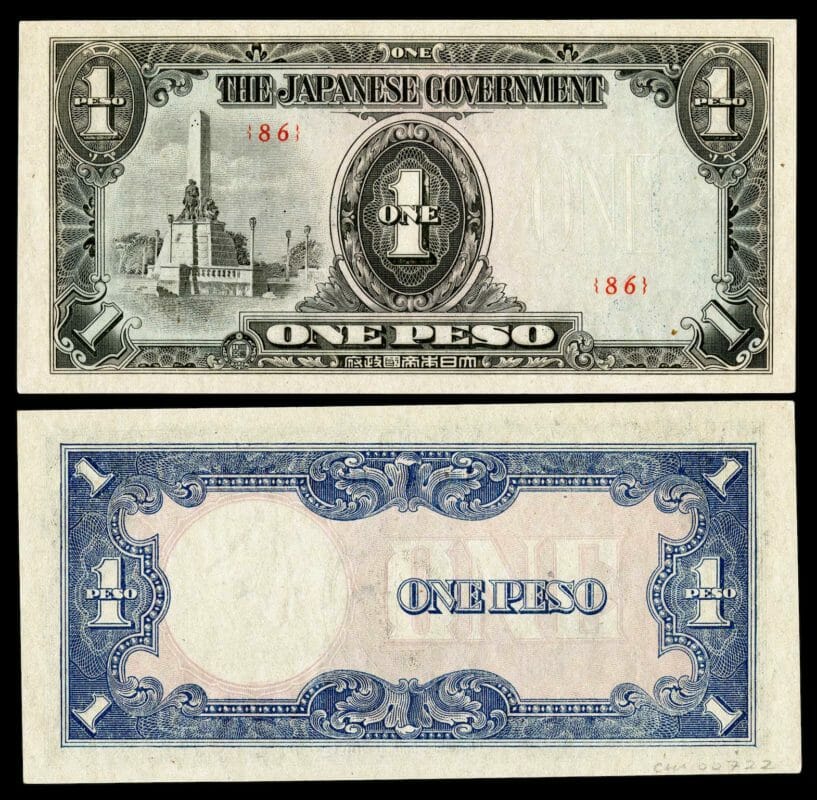A puppet PH gov’t during the Japanese Occupation in WWII

The Republic was probably best known for its worthless currency. The pesos of the Republic were soon dubbed “Mickey Mouse” money. CONTRIBUTED
Once it became apparent in December 1941 that the combined Filipino and American forces could not defeat the invading Japanese Imperial Army at the beaches, General Douglas MacArthur ordered a systematic retreat to the Bataan peninsula. On December 26, 1941, President Quezon of the Philippine Commonwealth and General MacArthur decided to declare Manila an “Open City” to spare it from the destruction of war.
Shortly after the declaration, President Quezon and General MacArthur traveled to Malinta Tunnel on the island of Corregidor. Since the Philippine Commonwealth government was now in exile, President Quezon assigned Jorge B. Vargas as the Mayor of Manila. He was tasked with protecting the welfare of the Filipinos during the excruciating challenges in the early months of the Japanese occupation.
The Japanese Imperial Army wasted no time in establishing its rule. On January 3, 1942, the commander of the Japanese forces, General Homma, proclaimed that the Philippines was now emancipated from American colonial occupation. He stated that the Americans were the oppressors, and that Japan was the liberator. To General Homma, Asia was for Asians not Western Imperialist.
According to General Homma, the Philippines like the rest of Asia would be a member of the Greater East Asia Co-Prosperity Sphere. What might have sounded attractive in theory to all its members only benefited Japan. General Homma immediately created a Japanese Military Administration in the Philippines.
To provide the Japanese military rule with a patina of Philippine government control, the Japanese established on January 23, 1942, a Central Administration Organization with a Philippine Executive Commission. Filipinos would oversee the functions of government such as education, justice, and other departments. There were many drawbacks and challenges for the Filipino commissioners. Their organization had continuous oversight and control by Japanese “advisors.”
By June 18, 1943, the Japanese thought that the Filipinos were ready for a Republic. A commission was founded to prepare for independence. A constitution was drafted for the new Republic. The Philippine Republic would have a Philippine Embassy in Japan, and a Japanese Embassy in the Philippines.
The Philippine Republic was inaugurated on October 14, 1943. Jose P. Laurel was proclaimed the President, and Benigno S. Aquino was made the Speaker of the National Assembly. This Republic was also known derisively as the “puppet” government. The Republic was probably best known for its worthless currency. The pesos of the Republic were soon dubbed “Mickey Mouse” money. The funny money soon reached astronomical inflation rates.
The Japanese sponsored Philippine Republic is known in Philippine history as the Second Philippine Republic. The First Philippine Republic, also known as the Malolos Republic, was established on January 23, 1899, and lasted until the capture of Emilio Aguinaldo by the Americans on March 23, 1901. The Third Philippine Republic was created on July 4, 1946, after the United States voluntarily granted independence to the Philippine Commonwealth Government. It lasted until 1972 when Ferdinand Marcos declared Martial Law and ruled by fiat.
When American airplanes started bombing Japanese military sites in the Philippines in September 1944, the Second Philippine Republic under President Laurel decreed Martial Law. on September 21, 1944. On the next day, President Laurel declared war against the United States and its allies.
When the American forces landed in Leyte on October 20, 1944, the role of the Second Philippine Republic became more and more irrelevant. The Commonwealth government in exile had now returned to the Philippines. A temporary site was established in Tacloban, Leyte. The interim site lasted approximately four months. The Commonwealth government under President Sergio Osmena was reestablished in Manila on February 27, 1945.
On August 17, 1945, two days after Imperial Japan agreed to an unconditional surrender, the Second Philippine Republic, 1943 to 1945, was dissolved. President Laurel had been the only president of the republic.
After World War II, a heated debate among Filipinos and Americans ensued on the role and responsibilities of the officers of the Second Philippine Republic. Many of the members were from prominent families, and they had served honorably in the Commonwealth government.
Were the members of the Japanese sponsored republic collaborators or traitors? Were they just pretending to serve the Japanese to protect the Philippine people from the abuses and terror of the Japanese occupation like President Quezon had tasked Jorge Vargas? Ultimately, most of the members of the Second Philippine Republic were exonerated, and some would serve in the Third Philippine Republic.
Dennis Edward Flake is the author of three books on Philippine-American history. He is Public Historian and a seasonal park ranger in interpretation for the National Park Service at the Eisenhower National Historic Site in Gettysburg, PA. He can be contacted at: flakedennis@gmail.com

